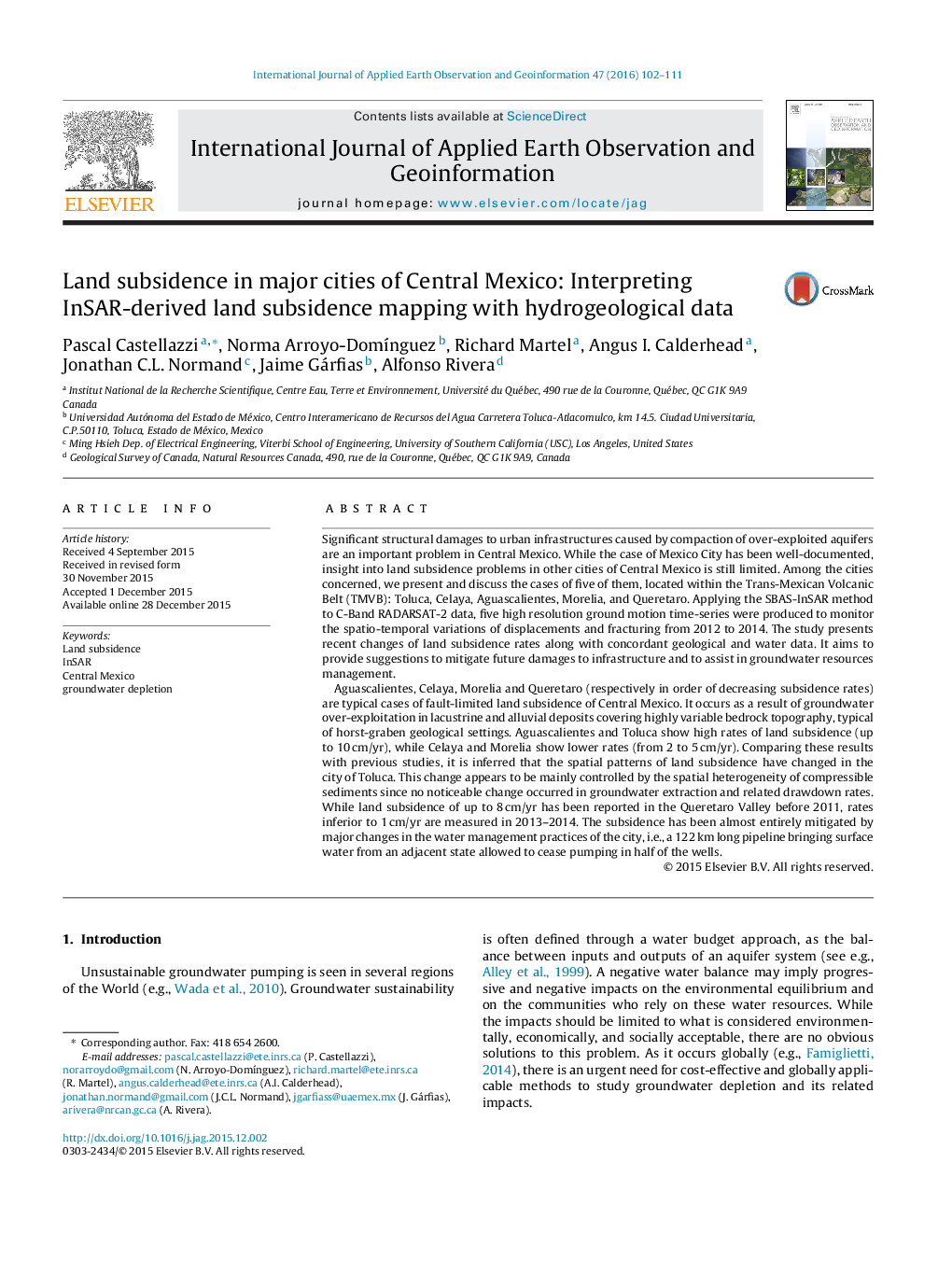| Article ID | Journal | Published Year | Pages | File Type |
|---|---|---|---|---|
| 4464642 | International Journal of Applied Earth Observation and Geoinformation | 2016 | 10 Pages |
•SBAS-InSAR technique is applied to five major cities of Central Mexico.•InSAR results are compared with groundwater drawdown rates and surficial geology.•Spatial and temporal changes in land subsidence patterns are revealed.•Subsidence in Queretaro decreased due to changes in water management.
Significant structural damages to urban infrastructures caused by compaction of over-exploited aquifers are an important problem in Central Mexico. While the case of Mexico City has been well-documented, insight into land subsidence problems in other cities of Central Mexico is still limited. Among the cities concerned, we present and discuss the cases of five of them, located within the Trans-Mexican Volcanic Belt (TMVB): Toluca, Celaya, Aguascalientes, Morelia, and Queretaro. Applying the SBAS-InSAR method to C-Band RADARSAT-2 data, five high resolution ground motion time-series were produced to monitor the spatio-temporal variations of displacements and fracturing from 2012 to 2014. The study presents recent changes of land subsidence rates along with concordant geological and water data. It aims to provide suggestions to mitigate future damages to infrastructure and to assist in groundwater resources management.Aguascalientes, Celaya, Morelia and Queretaro (respectively in order of decreasing subsidence rates) are typical cases of fault-limited land subsidence of Central Mexico. It occurs as a result of groundwater over-exploitation in lacustrine and alluvial deposits covering highly variable bedrock topography, typical of horst-graben geological settings. Aguascalientes and Toluca show high rates of land subsidence (up to 10 cm/yr), while Celaya and Morelia show lower rates (from 2 to 5 cm/yr). Comparing these results with previous studies, it is inferred that the spatial patterns of land subsidence have changed in the city of Toluca. This change appears to be mainly controlled by the spatial heterogeneity of compressible sediments since no noticeable change occurred in groundwater extraction and related drawdown rates. While land subsidence of up to 8 cm/yr has been reported in the Queretaro Valley before 2011, rates inferior to 1 cm/yr are measured in 2013–2014. The subsidence has been almost entirely mitigated by major changes in the water management practices of the city, i.e., a 122 km long pipeline bringing surface water from an adjacent state allowed to cease pumping in half of the wells.
